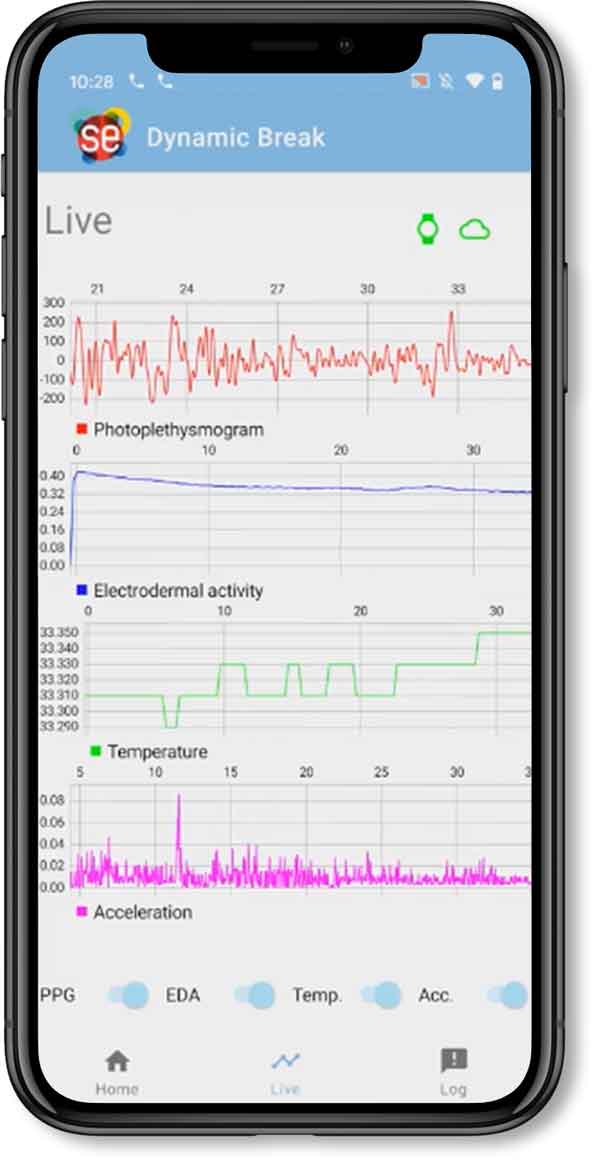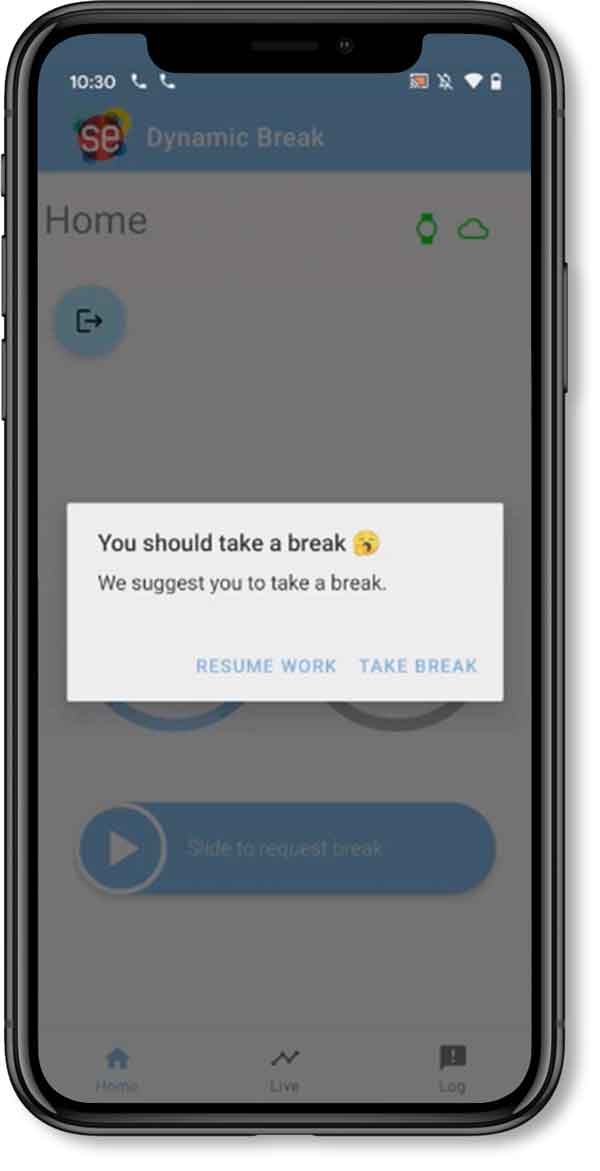Identifying stress, predicting stress: by using a dynamic organizer for work breaks logistics companies can organize work and control resources more flexibly within the warehouse and for transportation staff too. This is made possible by a new service that was developed within the context of the Silicon Economy: the »Dynamic Break«.
The logistics industry is very interested in the solution from the Silicon Economy development project, which has now been completed, because: »On the one hand, companies need to adapt their previously rigid structures for work organization so that they are closer to the actual demands of intralogistics and transport. On the other hand, companies today are also increasingly looking at key figures such as the sickness and retention rates which are influenced by typical logistics work requirements but also by an increased amount of intensive work«, explains Dr. Veronika Kretschmer of Fraunhofer IML who was in charge of the development project as product owner. »In the area of transport logistics in particular, interaction between mental and physical exhaustion can lead to a higher risk of accidents.«
The »Dynamic Break« project demonstrates that artificial intelligence will soon not only be negotiating, controlling and planning the worldwide flows of goods, but will also be involved in many other areas of logistics: this digital solution will individually recommend short recovery breaks to employees based on real stress parameters measured by a sensor wristband which the employees wear. In this way, critical stress levels cannot only be identified but can even be predicted. This is made possible by analyzing vital signs based on machine learning: i.e., patterns can be identified in an employee’s vital signs that result in a recommendation to take a break.

The idea of open source pervades here too
As in all Silicon Economy developments, the »Dynamic Break« consists of various open source components which are:
- a mobile application for communicating with employees in the company, i.e. an app
- a stress detection service (SDS) that analyzes the vital signs of the employees by means of machine learning and
- a resource management service (RMS) to manage break requests from the employees and the break recommendations that the SDS evaluates. The RMS also communicates directly with the company’s IT.
The source code for the specialist components will soon be available in the Silicon Economy repository.
Practice check: AI analyzes vital signs
And this is how the »Dynamic Break« works in practice: when the employees start to work they put on their sensor wristband and log into the app. Throughout the day, their vital signs such as pulse rate, electrodermal activity or body temperature are recorded and analyzed. »We make use of a deep neural network, in this case a convolutional network which we trained with data from a laboratory study. Based on the data, we already have a hit rate of 96 percent,« says Benedikt Mättig from Fraunhofer IML, Scrum Master and developer for the »Dynamic Break«. Following this Silicon Economy project which has now been completed, the aim is now to collect even more valuable real data from companies.
As soon as the employees reach a stress level indicating that they need a short break, they receive a notification from the system. The employees can choose whether to accept or decline the recommended recovery break. If they accept the recommendation, their working time is stopped and measurement of the break time starts. The employees can stop the break themselves or wait for the system’s recommendation. In order for this to work, processes at individual companies must be taken into consideration. Of course, the employees can always log a break on their own. Ultimately, the shift supervisor or dispatcher has to decide how many employees can take a break at the same time.
All requests and recommendations converge in a dashboard. I.e., the shift supervisor can decline a break if the workload is too high, or set threshold values depending on the order situation so that the system grants or declines breaks independently. The employees’ data are depicted anonymously so that the dispatcher cannot see who was registered for a break. The data protection concept for the »Dynamic Break« will be further refined over the next few weeks.
Picture: Fraunhofer IML

